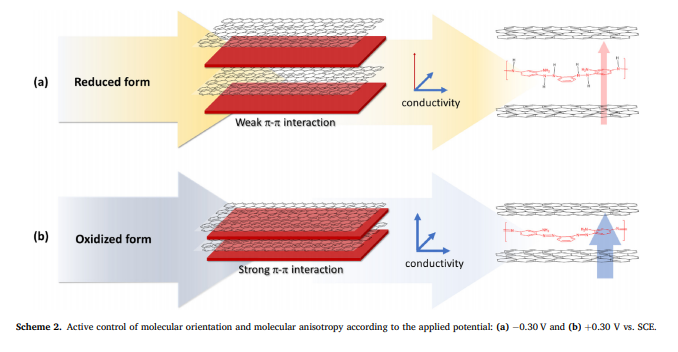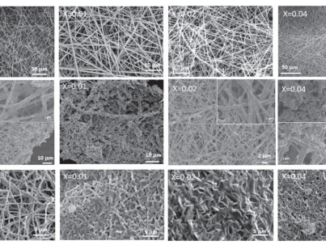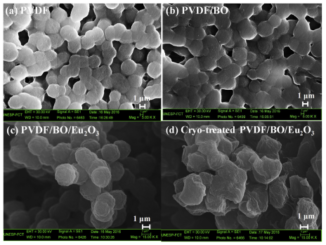
Synergistic effect of reduced graphene oxide/azo-polymer layers on electrochemical performance and application as nonenzymatic chemiresistor sensors for detecting superoxide anion radicals
Abstract: The present paper describes a nonenzymatic chemiresistor sensor based on an azo-polymer and reduced graphene oxide (rGO) as a resistive platform for superoxide radical detection. The sensorial platform was prepared on layer-by-layer-assembled films of poly(azo-Bismarck Brown Y) and reduced graphene oxide by cyclic voltammetry. The nanocomposite film exhibited interesting synergetic properties based on the redox properties of the azo-polymer combined with the good electronic conductivity and stability of graphene. The electrical conductivity mechanism of the graphene-polymer was analyzed by electrochemical impedance and compared to that of an electrode coated with only polymer. The conductance properties of the interlayer formed by pi-pi stacking between the conjugated structure of the polymer chains and the structure of the graphene sheet are dependent on the applied potential of the system. The performance of the poly(azo-BBY)/rGO film as a chemiresistor material for the sensing of superoxide anions was evaluated by impedance measurements at the applied potential of +0.30 in PBS (7.4). The charge transfer resistance values change substantially in the presence of superoxide in solution. The effect of superoxide on the resistivity of the device is attributed to changes in the oxidation state of the polymer. The impedance measurements in real time (chrono-impedance) with the poly(azo-BBY)/rGO sensor with different superoxide concentrations revealed good linearity behavior between the real impedance and the superoxide anion concentration (0.12-2.6 mmol L-1) with a detection limit of 81.0 mu mol(-1).
Author(s): Olean-Oliveira, A; Pacheco, JC; Seraphim, PM; Teixeira, MFS
JOURNAL OF ELECTROANALYTICAL CHEMISTRY
Volume: 852 Published: NOV 1 2019
DOI: 10.1016/j.jelechem.2019.113520




